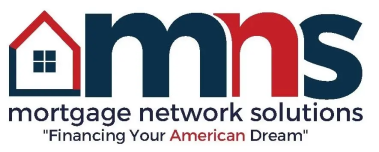

If you are in the market for a home loan, an adjustable-rate mortgage may be very attractive in today’s higher rate climate. If you’ve looked into ARM loans, you may also have come across the term “convertible ARM.” If you’re unfamiliar with this product, here’s what you need to know to decide if it’s a good fit for you:
How an ARM Loan Works
The most common type of mortgage is a fixed-rate loan. That means the interest rate the lender charges you is set at the beginning of the loan and does not change. Your interest payments are amortized or spread out over the course of the loan and your monthly mortgage payment is the same from start to finish.
With an adjustable-rate mortgage, the interest rate is allowed to vary over time. All ARM loans have a low introductory rate period: 3, 5, 7, or 10 years. During that time, your interest rate acts like a fixed rate and your payments are consistent. When your initial period is over however, your interest rate is allowed to adjust at regular intervals. These adjustment periods can be once a month, a quarter, a year, three years, or five years. Your interest rate will be tied to a market index, like the Secured Overnight Financing Rate (SOFR), plus have a margin added to it that will be listed in your loan paperwork. For example, if the SOFR rate is currently 4% and your specified margin is 3%, your mortgage rate would be 7%. All ARM loans have caps on how much they can increase during your adjustment periods and a lifetime cap of how much they can rise over the full term of the loan. These caps vary by loan.
What is an ARM Conversion Option?
Depending on the direction of interest rates, adjustable-rate mortgages can become much more expensive over time. Plus, there is the constant worry about how much your payment might climb and if you can afford the higher payment. Some ARM loans come with an option to convert them into fixed-rate loans in the future. For a fee ($100 for Fannie Mae-backed loans, $250 for monthly conversion options), a borrower can decide to exercise that option, usually within a certain window, somewhere between one year to five years after the ARM loan starts.
Conversion Benefits
There are several reasons that a convertible ARM could be helpful.
- Fixed-Rate Stability – Converting into a fixed-rate will take the guesswork and worry out of making a mortgage payment. Some borrowers would rather have the consistent payment rather than wait and hope for interest savings from the market.
- Lower Interest Rate – There may be times when mortgage interest rates fall below your adjustable rate. In this case, it makes perfect sense to switch into a fixed-rate loan to capitalize on even more savings.
- Lower Fees Than Refinancing – The cost of converting an ARM loan is tiny compared to the thousands of dollars a borrower will pay in closing costs to refinance into a new fixed-rate mortgage.
Conversion Risks
There are some risks that come with a convertible ARM option.
- Only Helps with Lower Rates - If market interest rates rise higher than the borrower’s current rate, then there is no financial benefit to converting as the payments and loan would be more expensive.
- Difficult to Predict Markets – With a convertible ARM option, you may have to wait and watch and hope to time the market just right to cash in on savings from converting. Even the experts can’t predict the markets most of the time.
A convertible ARM loan can be a good choice for some borrowers, especially when market conditions cooperate in your favor.
Give us a call today to find out what mortgage options are available to you.

